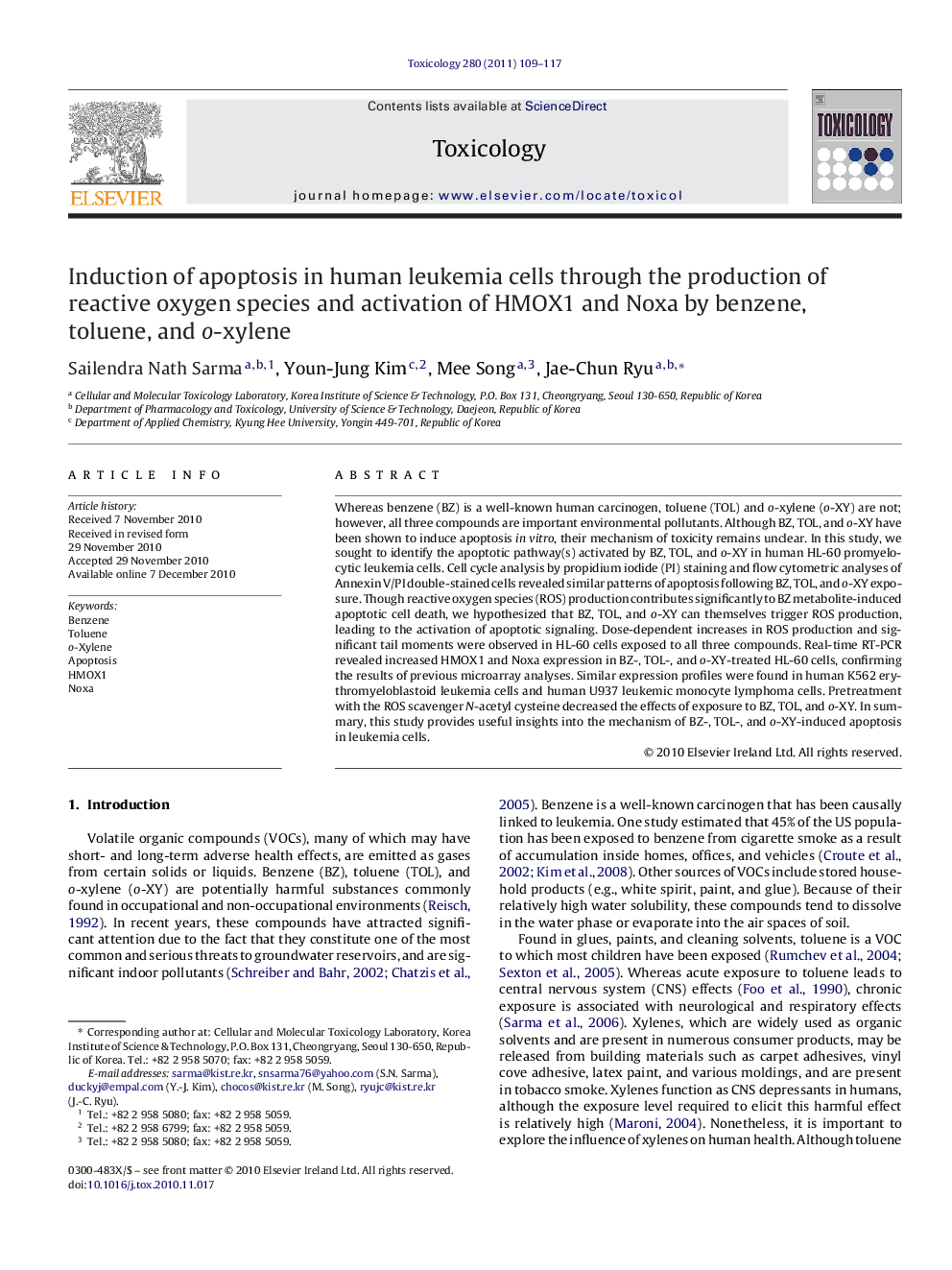| Article ID | Journal | Published Year | Pages | File Type |
|---|---|---|---|---|
| 2596267 | Toxicology | 2011 | 9 Pages |
Whereas benzene (BZ) is a well-known human carcinogen, toluene (TOL) and o-xylene (o-XY) are not; however, all three compounds are important environmental pollutants. Although BZ, TOL, and o-XY have been shown to induce apoptosis in vitro, their mechanism of toxicity remains unclear. In this study, we sought to identify the apoptotic pathway(s) activated by BZ, TOL, and o-XY in human HL-60 promyelocytic leukemia cells. Cell cycle analysis by propidium iodide (PI) staining and flow cytometric analyses of Annexin V/PI double-stained cells revealed similar patterns of apoptosis following BZ, TOL, and o-XY exposure. Though reactive oxygen species (ROS) production contributes significantly to BZ metabolite-induced apoptotic cell death, we hypothesized that BZ, TOL, and o-XY can themselves trigger ROS production, leading to the activation of apoptotic signaling. Dose-dependent increases in ROS production and significant tail moments were observed in HL-60 cells exposed to all three compounds. Real-time RT-PCR revealed increased HMOX1 and Noxa expression in BZ-, TOL-, and o-XY-treated HL-60 cells, confirming the results of previous microarray analyses. Similar expression profiles were found in human K562 erythromyeloblastoid leukemia cells and human U937 leukemic monocyte lymphoma cells. Pretreatment with the ROS scavenger N-acetyl cysteine decreased the effects of exposure to BZ, TOL, and o-XY. In summary, this study provides useful insights into the mechanism of BZ-, TOL-, and o-XY-induced apoptosis in leukemia cells.
